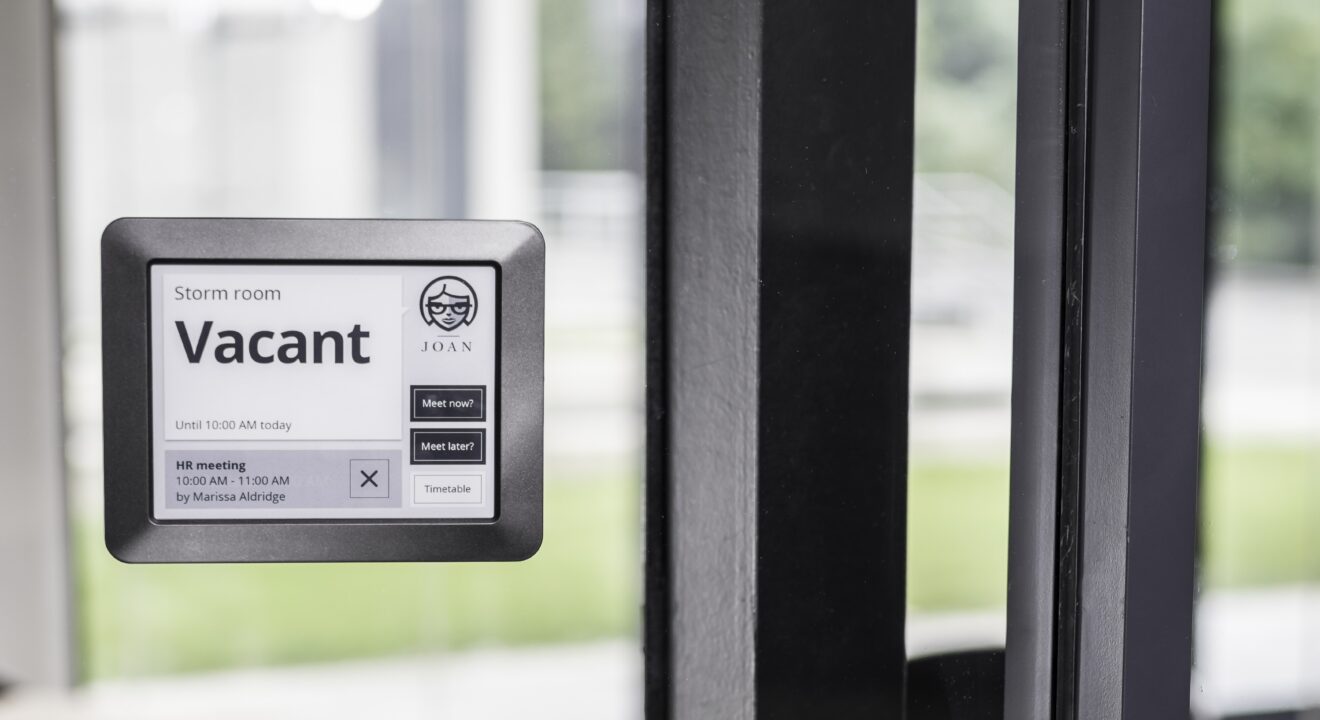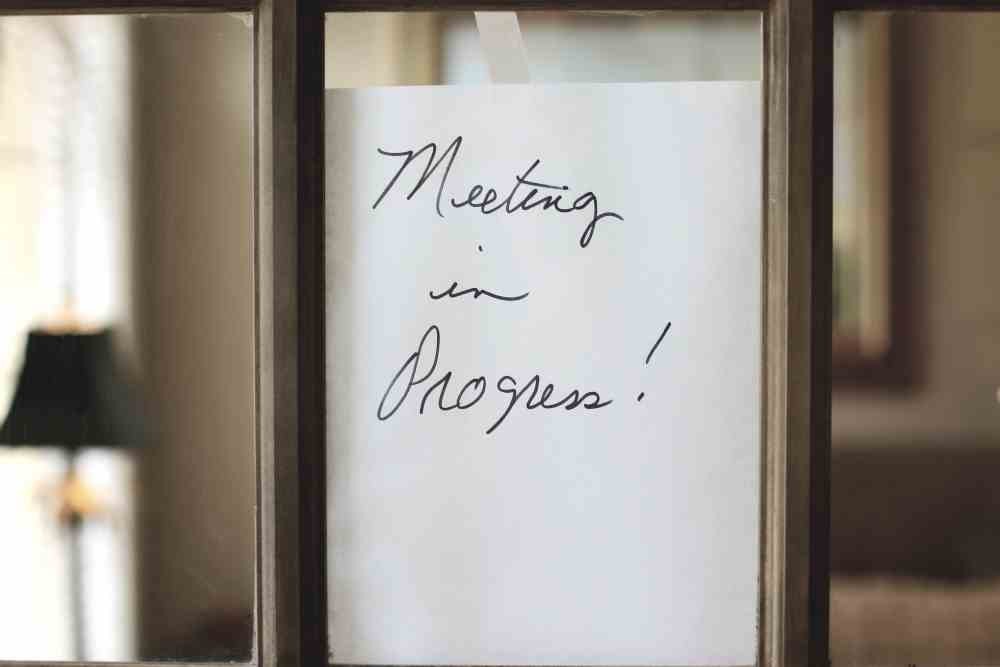

Focus your efforts on work with the help of a perfect e-paper door label
Visionect, 4 Sep 2015
Keeping track of meeting room availability across an office, building, campus or venue is all too often a cumbersome task, eating up man hours and resources. Bringing room labels into the modern age is electronic paper.
The cycle of updating meeting room availability on paper is a waste of employee time and often confusing for the end user.
The cycle of updating meeting room availability in an office seems unending. First, finding the designated person to edit the paper slips, setting aside design and readability in the mad rush to complete them. Second, printing out the paper notifications and delivering them to the necessary, often scattered locations, attaching the correct sheet of paper to the correct door, and so on and so on.
It is nothing if not a waste of employee time, with a single misprint or misunderstanding resulting in the whole vicious cycle of printing and posting repeating itself.
And it’s not just the facility manager that is faced with the trouble of analogue – the door sign end user’s patience is likewise to be tried with notifications that might display outdated information if any at all, falling off the door and crammed with unintelligible information, full of frayed edges and faded print.

Yes, the meeting room is taken. But for how long and by whom is anyone’s guess…
“It would have been funny if it didn’t happen so often”
It’s a reality that Zemanta, a content demand-side platform provider knew all too well. In the confusion that was conference room booking in their Ljubljana office, they often found themselves double booked or interrupting meetings already in progress.
We helped Zemanta sort the confusion that was conference room booking by providing them with Joan, an office productivity gadget we were developing.
“It would have been funny if it didn’t happen so often: people barging into occupied rooms or pacing outside the door, unsure if the room was booked or not. All this just because people forgot to update the room status or were running a couple of minutes late and somebody else took over the space assuming the room was free”, said Martina Ring, Zemanta’s Office Manager.
The result was a tiresome process of clearing up who reserved the room when, updating the room status both online and on the door notice, and wasting precious time in the meantime.
We helped Zemanta out by providing them with access to a beta version of an office productivity gadget we were developing: Joan, the electronic paper door label.

The Joan room label leaves the end user in no doubt as to room vacancy status while also utilizing paper – electronic paper, that is.
Joan, a seamless solution for room signage and room signage alone
Easily mounted on all surfaces with a magnetic tape, Joan is a slim tablet with an electronic paper display that is attached to the conference room door or wall to provide meeting information and announce upcoming events.
The device was designed to bring room reservations into the modern age, marking conference room vacancy statuses in seconds after the meeting or event has been entered into the online calendar or booked on the spot.
Joan’s electronic paper display marks conference room vacancy statuses, seamlessly integrating with existing meeting scheduling software and featuring extremely long battery autonomy instead of wires.
No repurposed tablets finding an additional use for their glare- and cable-heavy displays here: the electronic paper label is built to be a door sign and nothing else. Built from the ground up as room signage and room signage alone, it features perfect readability, no wires and is battery-powered with super long autonomy, fitting perfectly into every interior and connecting over standard Wi-Fi.
But Zemanta found the best part of Joan to be the fact that the door signs’ meeting room software takes care of seamless integration between the e-paper labels and the calendars in use. When using Joan no additional signage software is needed and no complex integrations, as the label fits perfectly into a company’s existing meeting scheduling software.
Saving time and increasing efficiency
Joan is functional in minutes after unboxing, without the need to train staff or allocate resources to system integration – exactly how room labeling should work.
Now ready to be officially launched, Joan leaves the end user in no doubt as to room vacancy status, eliminating any possibility of unwelcome meeting interruptions and dispelling all concerns as to when the space will become available.
Said Zemanta: “By using Joan we could focus our efforts on what is truly important, our clients and projects, instead of wasting it on office management.”
Most importantly, Joan eliminates the need for the venue operator to replace room availability notices one by one, with the employees updating conference room statuses from the comfort of their laptops or smartphones, or even on the spot, at the meeting room door. This means less time for administrative fuss and more time for actual work – for venue operator and employee alike.
This is something that Zemanta discovered as well: “By using Joan we could focus our efforts on what is truly important, our clients and projects, instead of wasting it on office management”, commented Ring.
Tags

